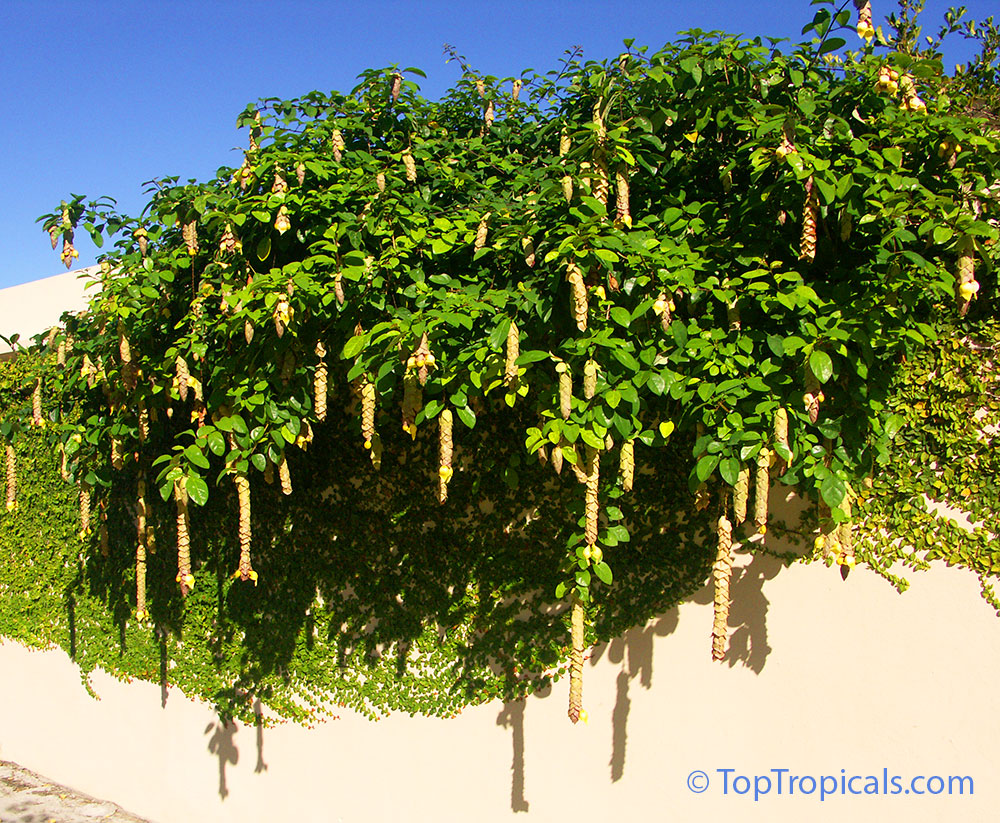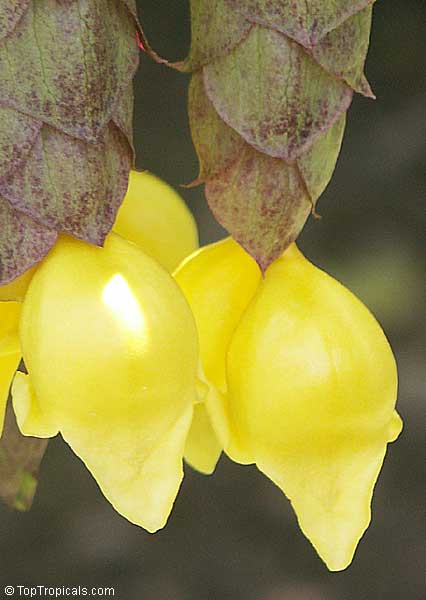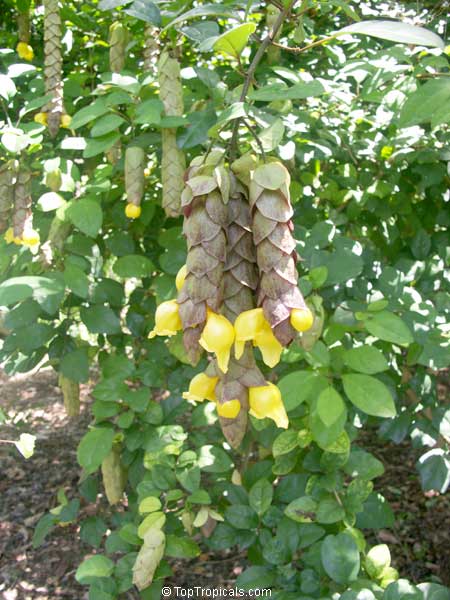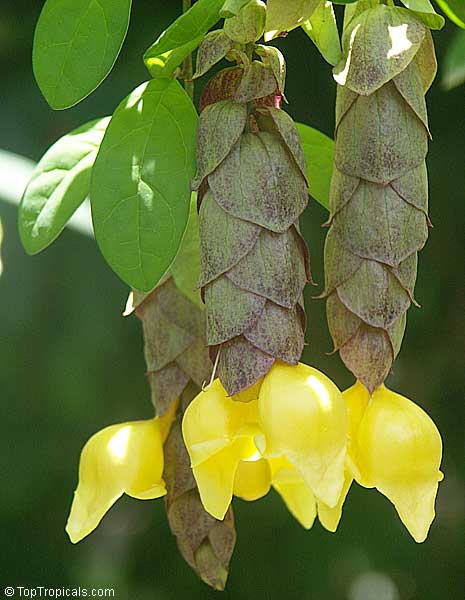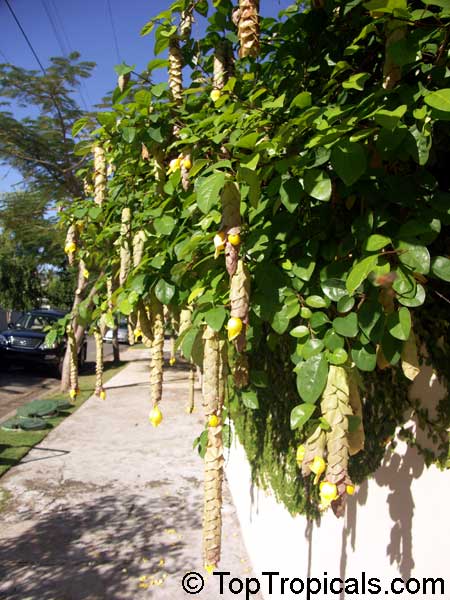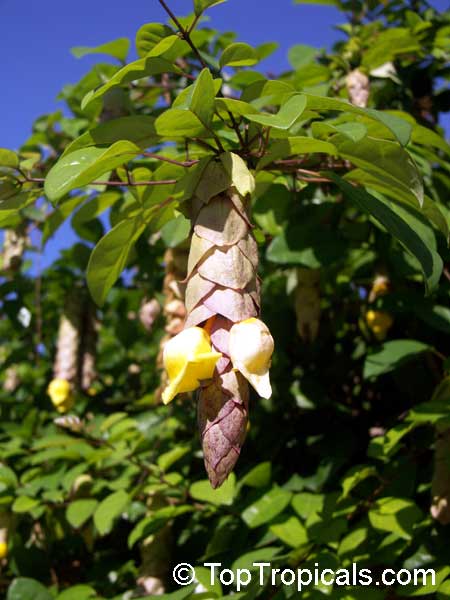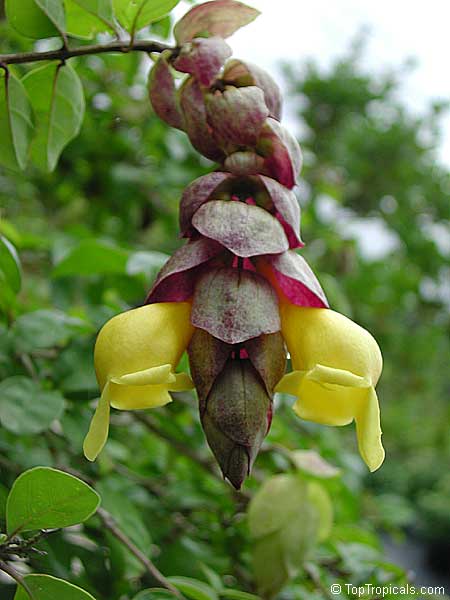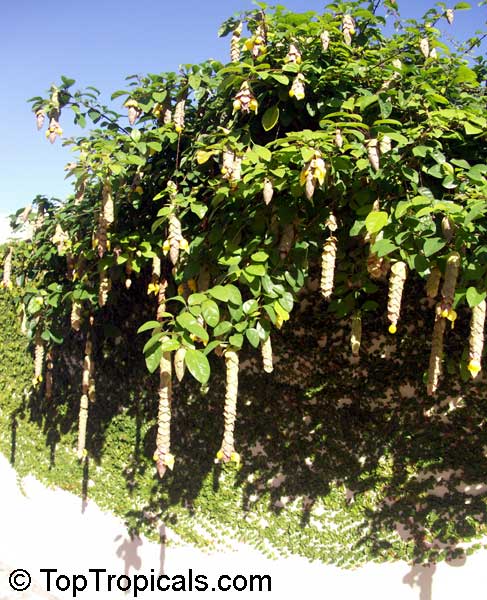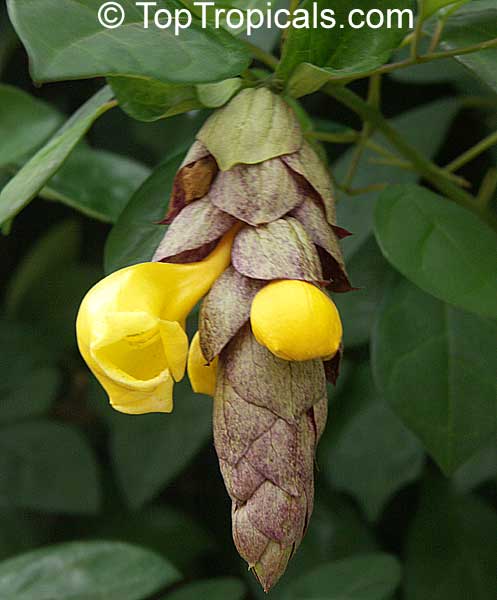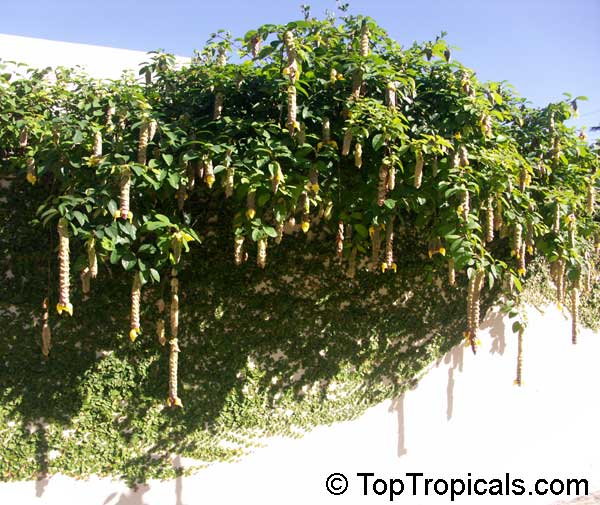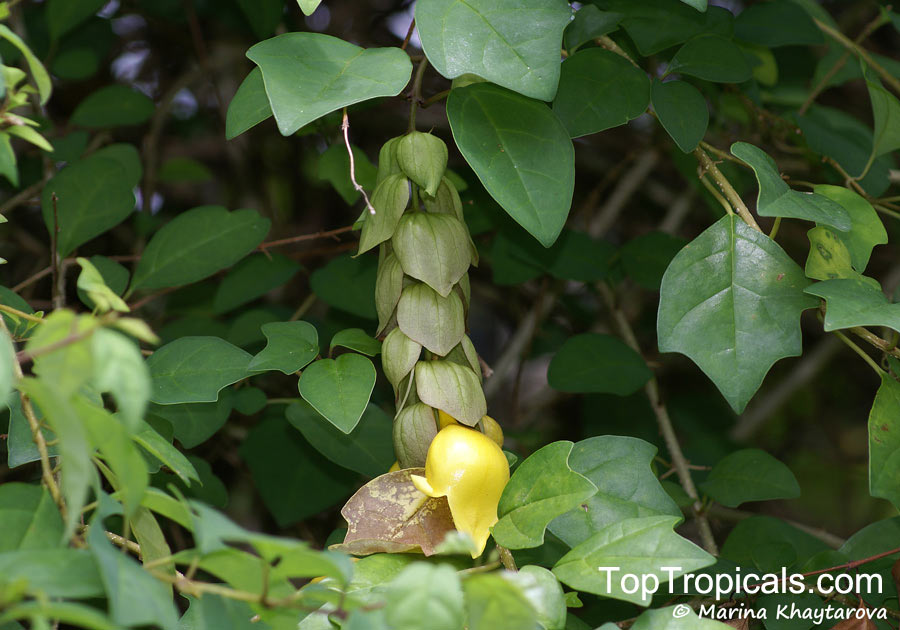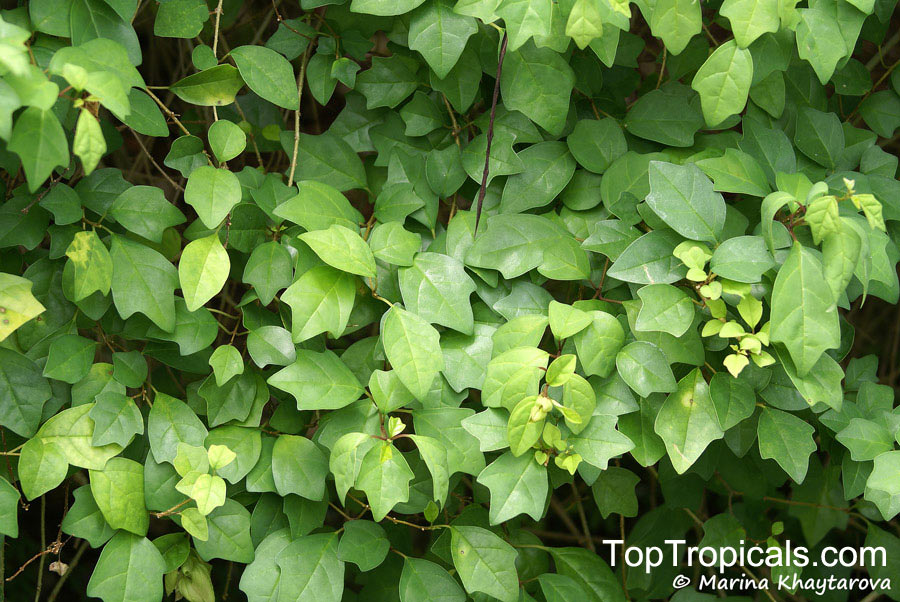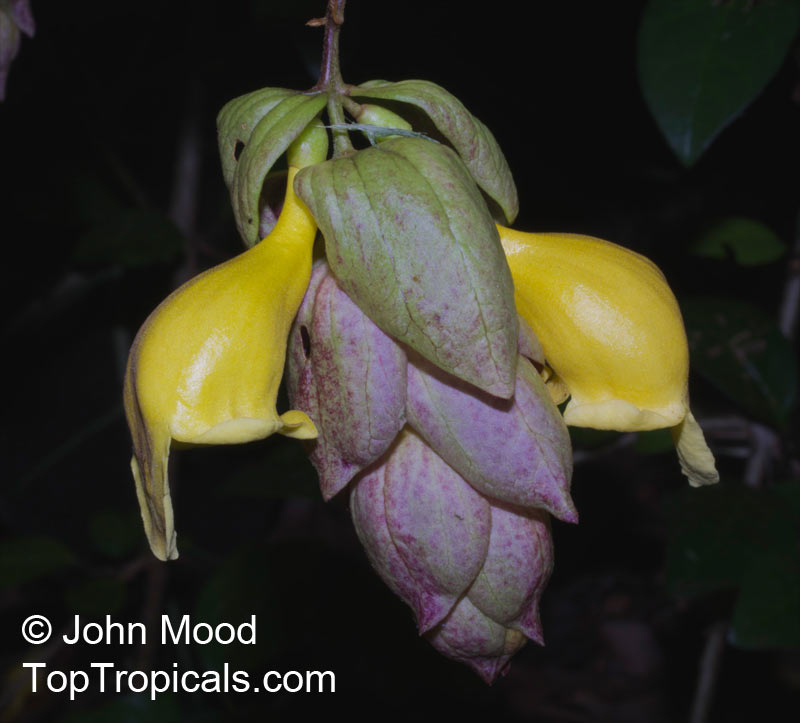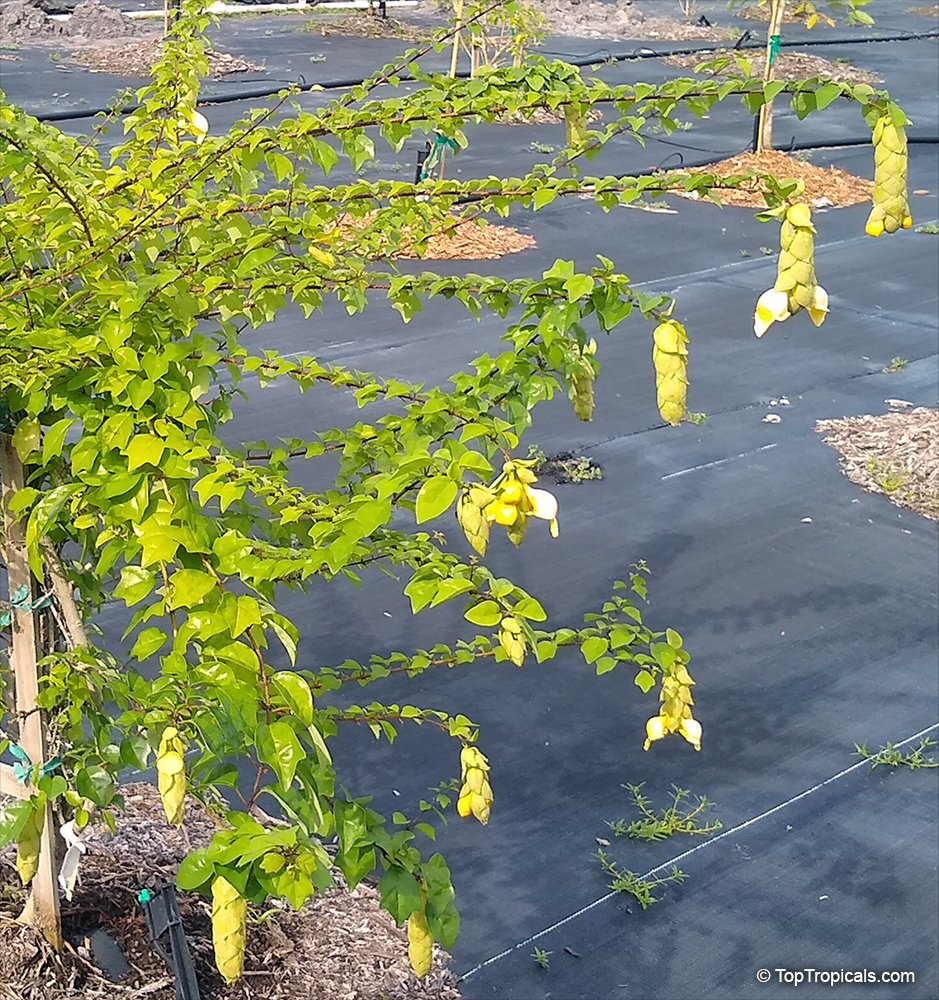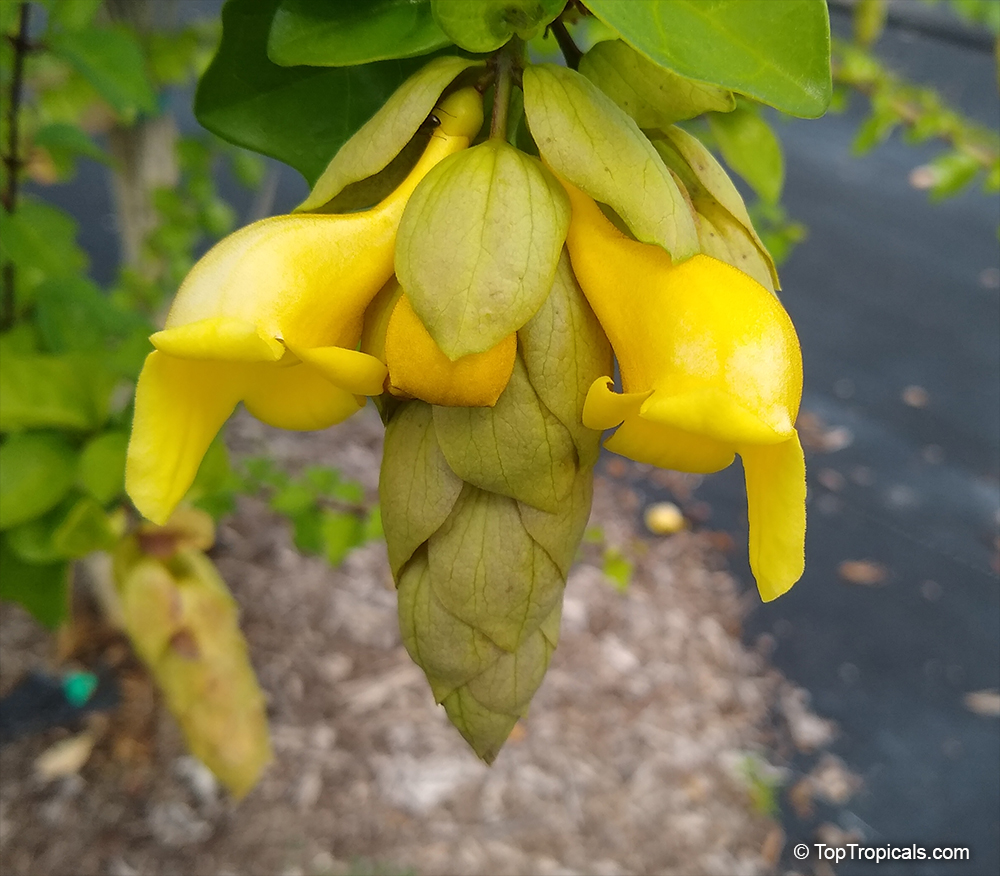Gmelina philippensis (Hedgehog)
Top Tropicals Plant Encyclopedia
Botanical name: Gmelina philippensis
Common names: Hedgehog, Parrot's Beak, Ching-chai
Family: Lamiaceae
Origin: Malaya, Malaysia, India, Philippine Islands










Parrots Beak is a unique round shrub with whimsical pendant branches and leaves and flowers that unmistakably resemble a parrots beak.
The leaves, in their comical way, mimic a parrot doing a joyful handstand. Vibrant and green, they bring smiles effortlessly.
The yellow blossoms are like mini parrot beaks hanging upside-down, creating a perpetual garden carnival all year long.
This charming, low-maintenance, sun-loving plant adds a touch of the tropics and endless whimsy to your garden. It is a butterfly magnet.
Parrots Beak grows fast and is an excellent choice for garden centerpieces or live hedges. It is water-wise and handles dry spells gracefully.
This laid-back plant doesn't demand much, letting you sit back and enjoy the tropical vibes in your garden.
Large yellow pod contains 1 seed. Sow seed in standard potting mix with good drainage. Grow in full light, water freely and feed once a month. Related species - Gmelina Arborea. These are tropical plants, can be deciduous in cooler climates.
Variegated form: Half n Half Parrot's Beak - can be great for Bonsai. Meet a wild twist on a classic favorite! This rare variegated variety of Gmelina philippensis brings all the charm of the traditional Parrots Beak and then some. What makes it special? Its leaves are half green, half creamy-white, creating a striking two-tone effect on every branch. Some call it a conversation starter we call it one-of-a-kind!
- Compact growth and ivy-shaped foliage make it ideal for bonsai. The leaves reduce beautifully with training.
- Fast grower with a naturally tidy canopy.
- Produces eye-catching yellow flowers shaped like parrot beaks, hanging in chain-like racemes.
- Develops character as it ages: spiny branches, textured bark, and an artistic form perfect for styling.
- Tropical and easy-going - loves full sun, moderate water, and warmth.
Note: Gmelina is pronounced "Melina" - the G is silent, but the plant is anything but!
Check out video about Parrots Beak.
Similar plants: Gmelina philippensis (Hedgehog)
Sow seed in standard potting mix with good drainage. Keep warm and lightly moist. May be slow germinating.
Ordering seeds info
RECOMMENDED SUPPLIES:
Seed Germination Mix #3, professional grade
SUNSHINE-Epi - Seeds and cuttings booster
SUNSHINE Bombino - Young Plant Booster
